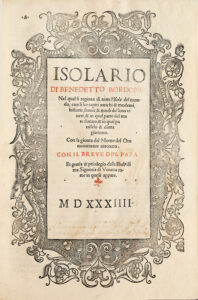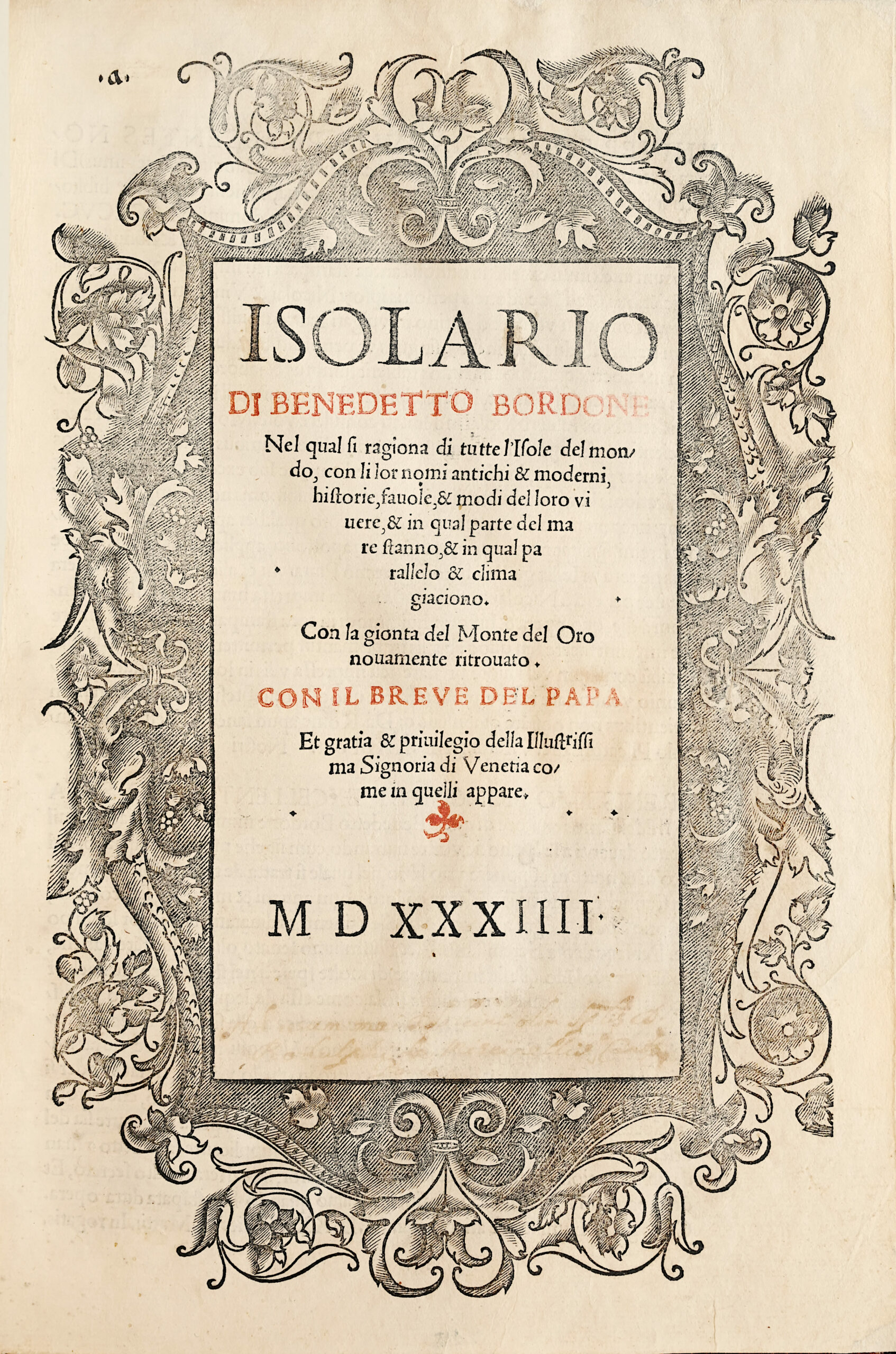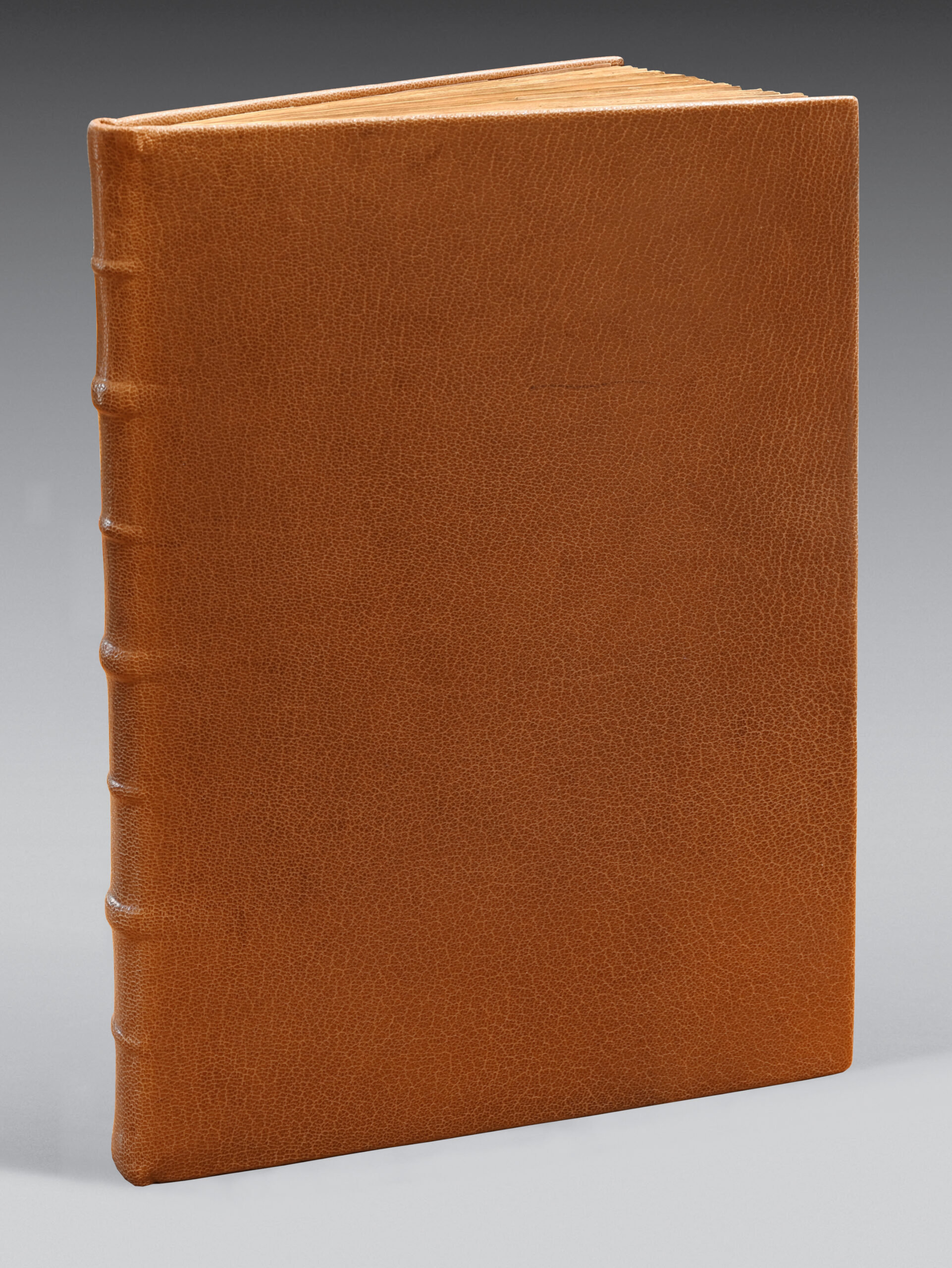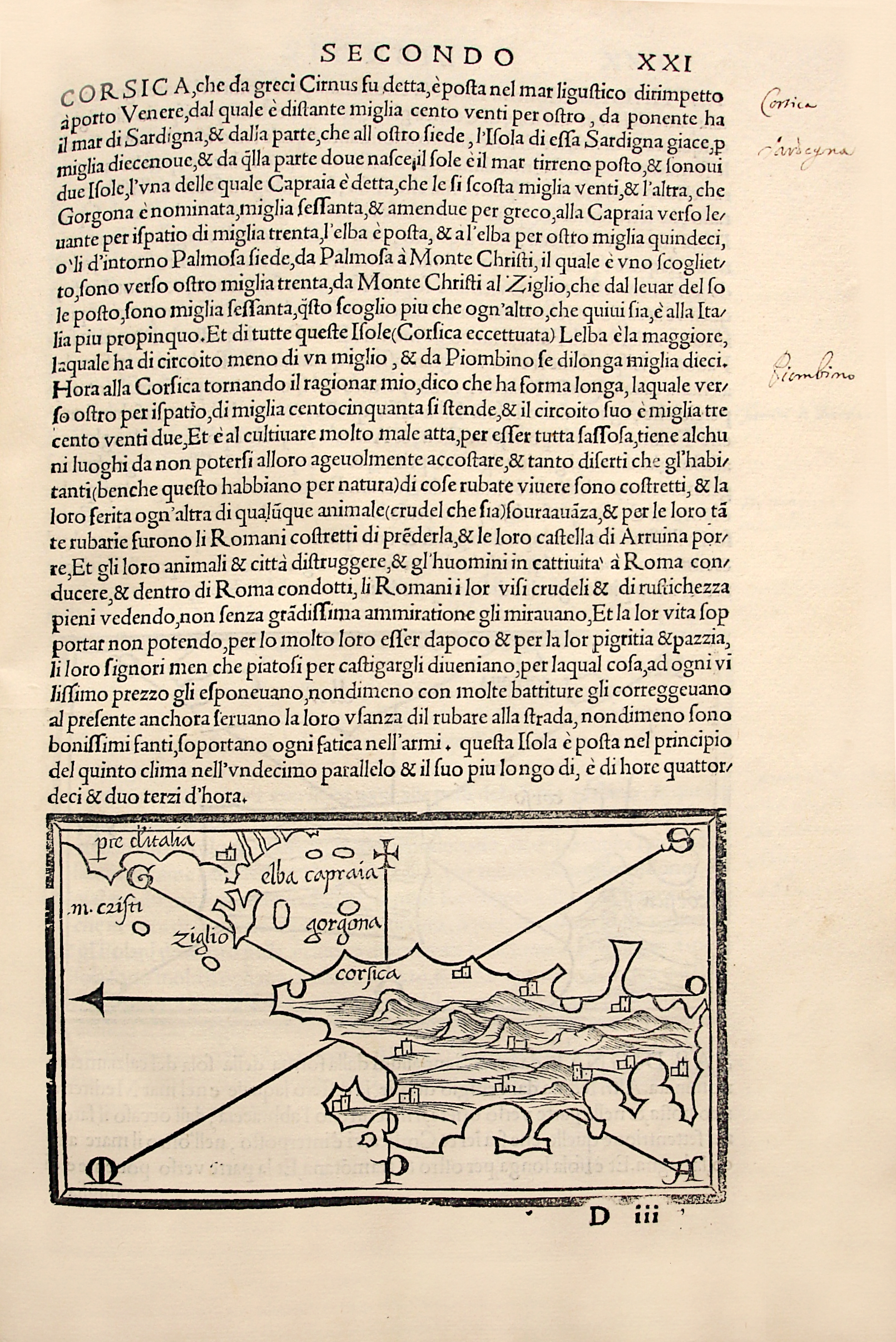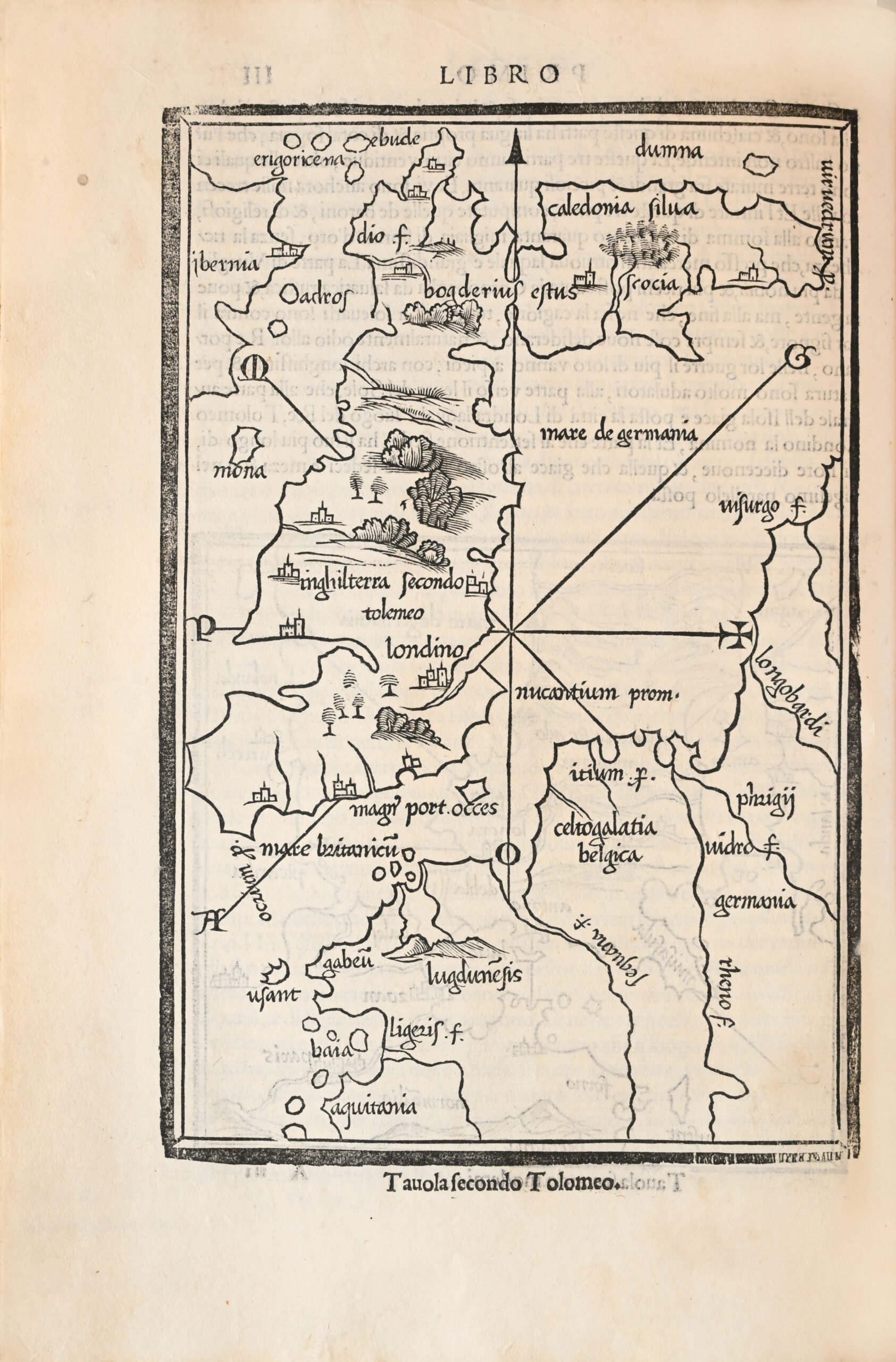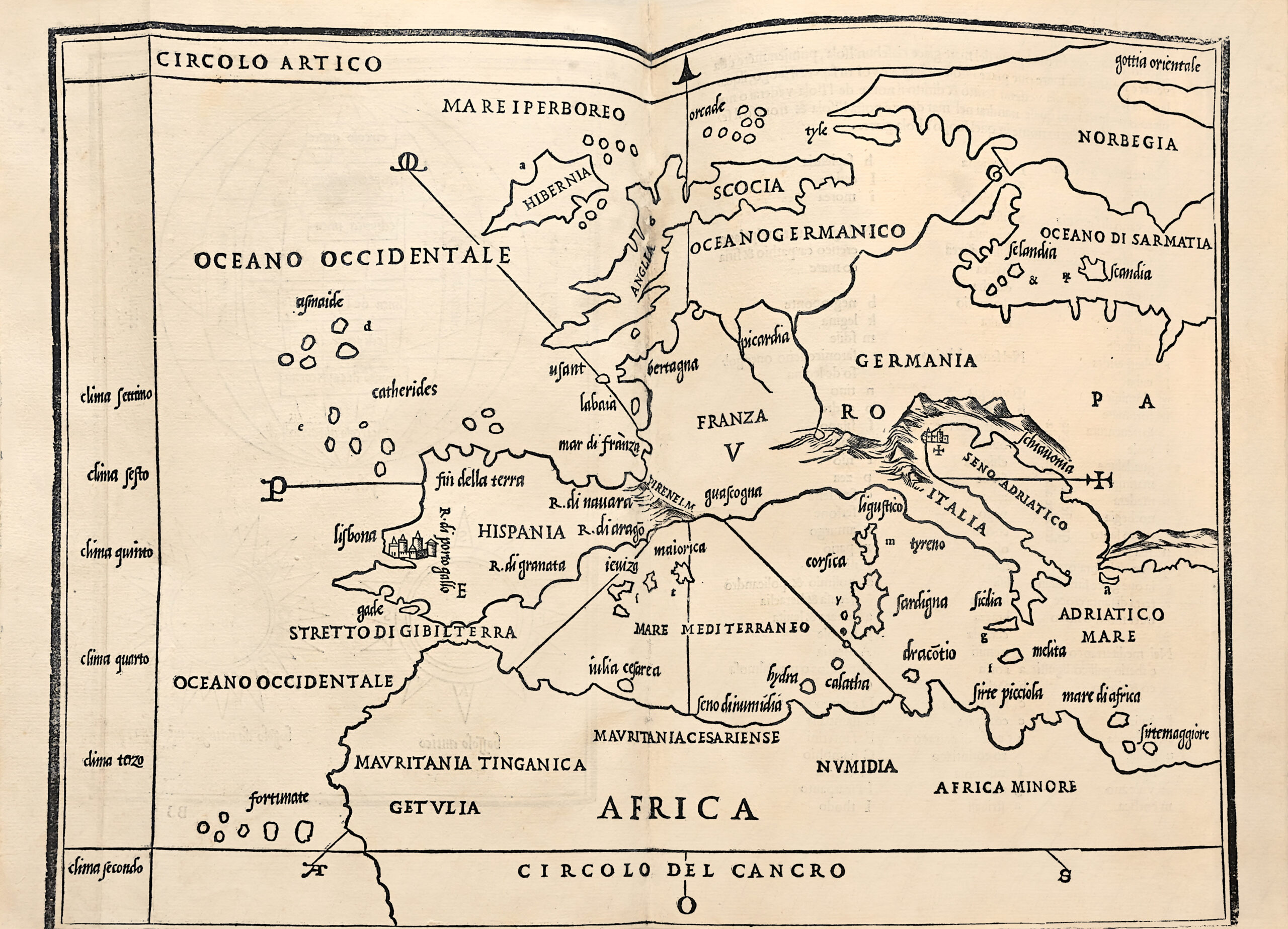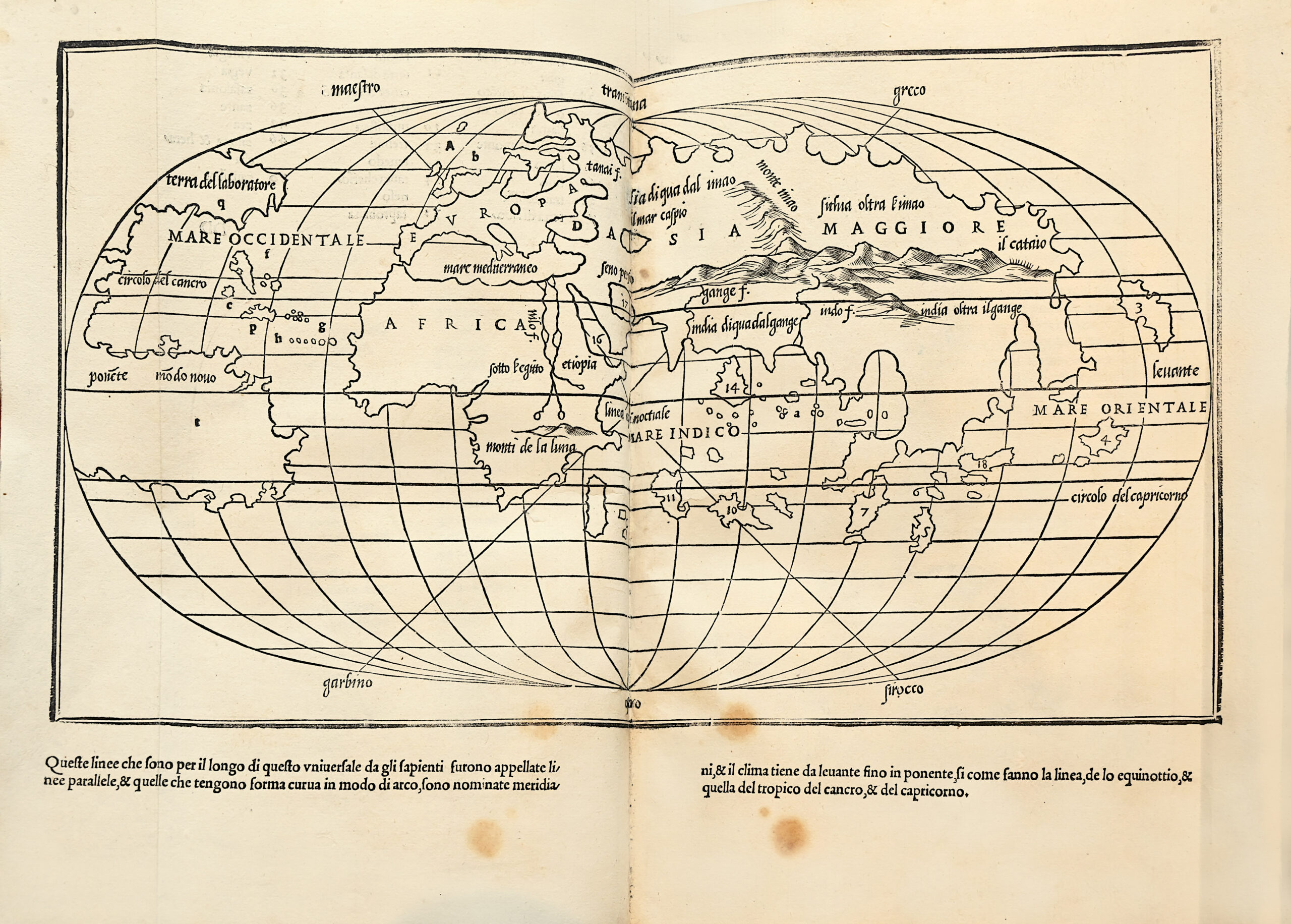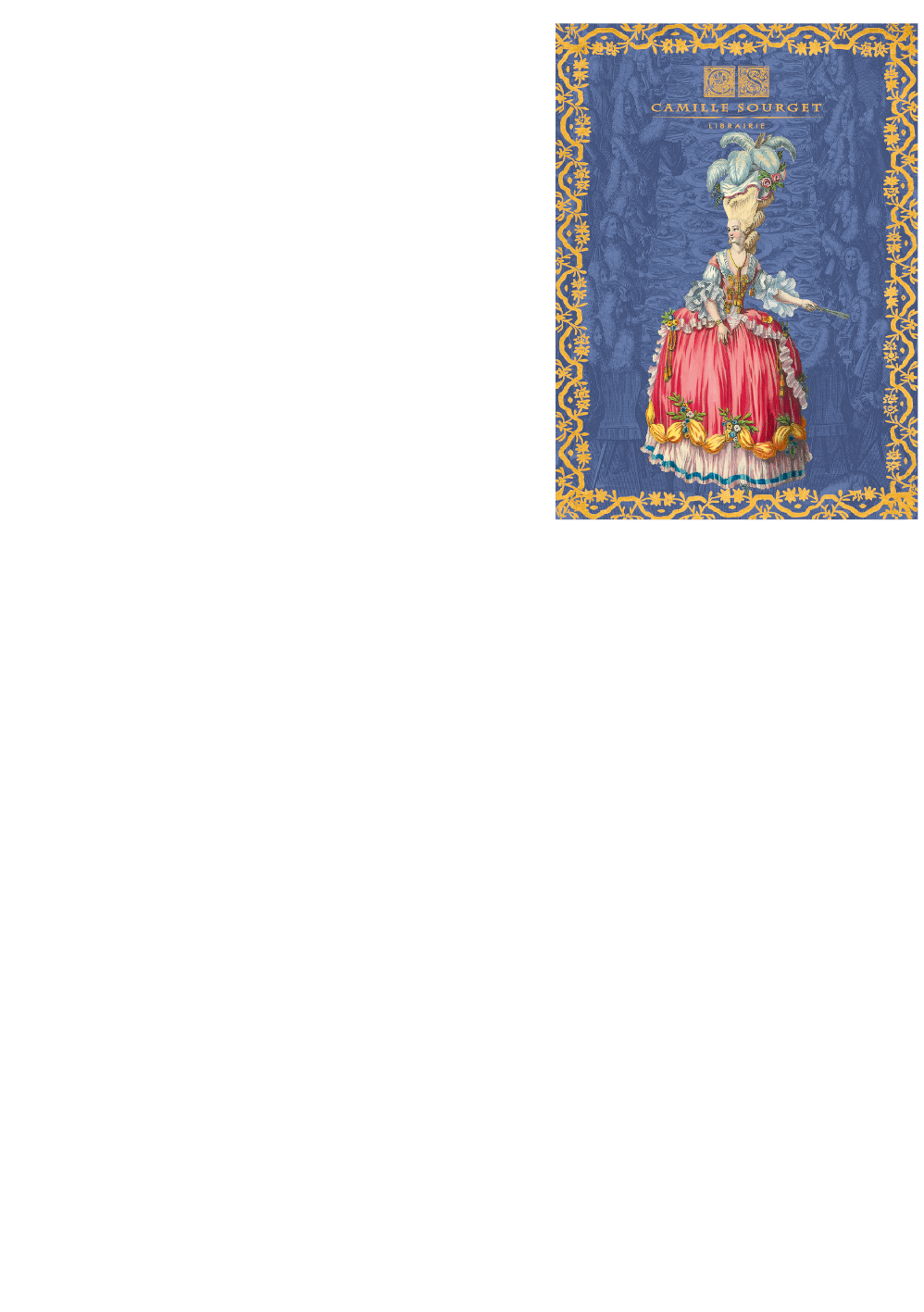Venice, Nicolo d’Aristotile Zoppino, June 1534.
In-folio de (4) ff. y compris 1 titre imprimé en rouge et noir au sein d’un encadrement gravé, 74 ff. présentant 112 cartes gravées sur bois dont 4 sur double-page (3 montées sur onglets) et 2 à pleine page, 1 diagramme, quelques initiales historiées, marge blanche inf. du feuillet final et du f. 66 restaurées sans atteinte au texte, plein maroquin havane janséniste. Reliure moderne.
296 x 203 mm.
The rare second and, from an Americanist point of view, the most desirable edition of the « Isolario » as it contains for the first time the « gionta del Monte del Oro novamente ritrovato » mentioned on the title-page, the earliest authentic description of Pizzaro’s entry into Peru to appear in a printed book.
Phillips/Le Gear 163 ; Nordenskiöld Coll. 28 ; Sabin 6419 ; Alden / L. 534/2 ; Borba de Moraes I, 112 Anm. ; Index Aurel 122-344.
The isolario, or « book of islands », was a cartographie form introduced and developed in Italy during the fifteenth and sixteenth centuries. Like the portolano, or pilot-book, to which it was related, it had its origin in the Mediterranean as an illustrated guide for travelers in the Aegean archipelago and the Levant. Bordone’s ‘Isolario’ was the second isolario to be printed and the first to give prominence to the transatlantic discoveries.
Divided into three books, the « Isolario » is devoted, respectively, to the islands and peninsula of the Western Ocean, to the Mediterranean, and to islands of the Indian Ocean and the Far East. While this order corresponds very roughly to that of Ptolemy, it gives conspicuous priority to the discoveries across the Atlantic. In addition to a page of diagrams illustrating the construction of a circular world map and wind roses of « ancient » and « modem type », there are three general maps: Europe, the Aegean, and an oval world map. The work also contains 107 small maps, plans, or views, including a nearly three-quarter page plan of Mexico City before the conquest of Cortez – which qualifies because it is an island. According to Cortazzi, the ‘Isolario’ also contains the earliest European printed individual map of Japan.
Cette édition contient aussi la première carte imprimée de la Corse.
Très rare et première carte imprimée de la Corse, publiée dans la seconde édition de l’Isolario de Benedetto Bordone. L’île est représentée à l’horizontale, le nord orienté à gauche. La carte est dérivée du portulan d’Andréa Bianco de 1436, et ne porte que le seul nom de « Corsica », situé à l’emplacement du Cap Corse. Onze villes sont représentées par des dessins de châteaux. Au nord-est de l’île, on peut voir les îles d’Elbe, Capraia, Giglio et Montecristo. Au verso figure une carte de Pianosa, ici nommée Palmosa, le nord de la Corse avec le Cap Corse nommé, le sud de l’île d’Elbe et les îles de Capraia et Gorgona.
Texte en italien sur les deux pages. Miniaturiste, géographe et graveur originaire de Padoue, Benedetto Bordone travailla à Venise. Son Isolario le rendit célèbre.
First edition using « Isolario » in the title. Amongst others with early depictions of the Carribean islands Cuba, Jamaica and Hispagnola, as well as with an early map of Japan, a large plan of Mexico before its destruction by Cortes and a large birds eye view of Venice. Containing on the last two leaves the first printed account of Pizarro’s conquest of Peru in 1533.
